Buttery, shortbread filled cookies with delicious jam! These gluten-free thumbprint cookies are a Christmas classic you’ll love making every holiday season!
My #1 tip for gluten-free thumbprint cookies that don’t spread or absorb the jam – freeze the cookies before baking!
Read the full post learn my expert tips for making the perfect thumbprint cookie.
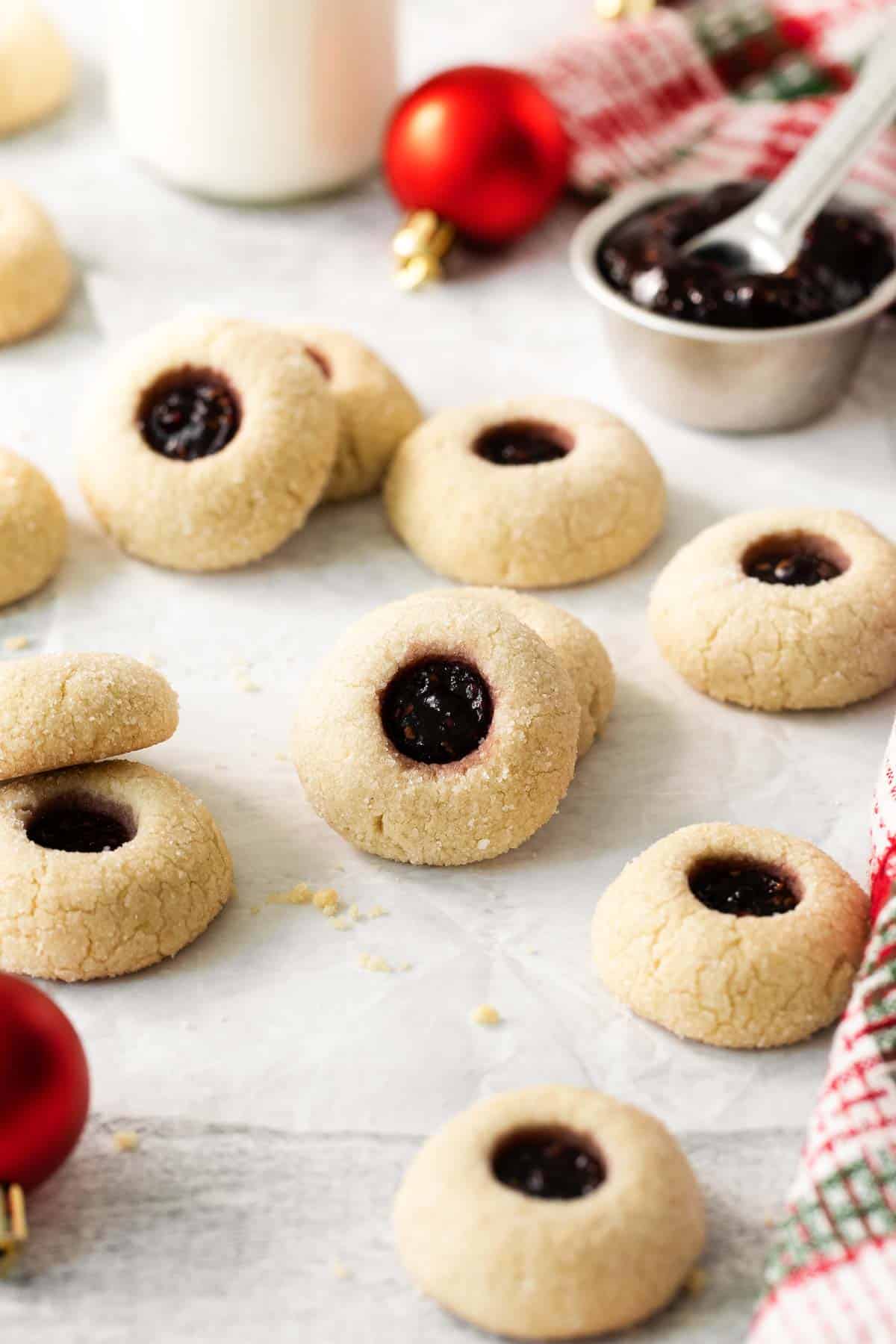
When you’re in the mood to make Christmas cookies, don’t forget about the classic thumbprint cookie!
They’re buttery and fruity. They’re traditional but unique. They’re simple but delicious!
Basically, these gluten-free thumbprint cookies are perfection. It doesn’t matter if you use homemade jam or store-bought jam, apricot jam or raspberry jam. You’ll love the combination of buttery shortbread cookies with a touch of fruity flavor!
Why this recipe works
After testing this recipe repeatedly, I’ve found the key to gluten-free thumbprint cookies that hold their shape and don’t absorb the jam into the cookie dough is to freeze the cookies before baking.
These cookies are a great baking projects to do with young kids. They’ll love pressing their thumbs into the center of each cookie, then adding a small spoonful of jam.
You could even switch up the filling in every other cookie to create a pretty, colorful pattern.
These iconic Christmas cookies are a must for the holiday season!
For more shortbread-like cookies, try these gluten-free snowball cookies, gluten-free shortbread cookies and gluten-free almond cookies.
Why You’ll Love this Recipe
- Fruity, buttery cookies
- Easy to make
- Made with simple ingredients
- Fun to make with kids
- Festive holiday cookie
For more gluten-free Christmas cookies, you might like these gluten-free sugar cookies, gluten-free gingerbread cookies, gluten-free biscotti, gluten-free chocolate crinkle cookies, gluten-free spritz cookies and gluten-free gingersnaps.
Ingredients You’ll Need
Here’s everything you’ll need to make these amazing gluten-free cookies.
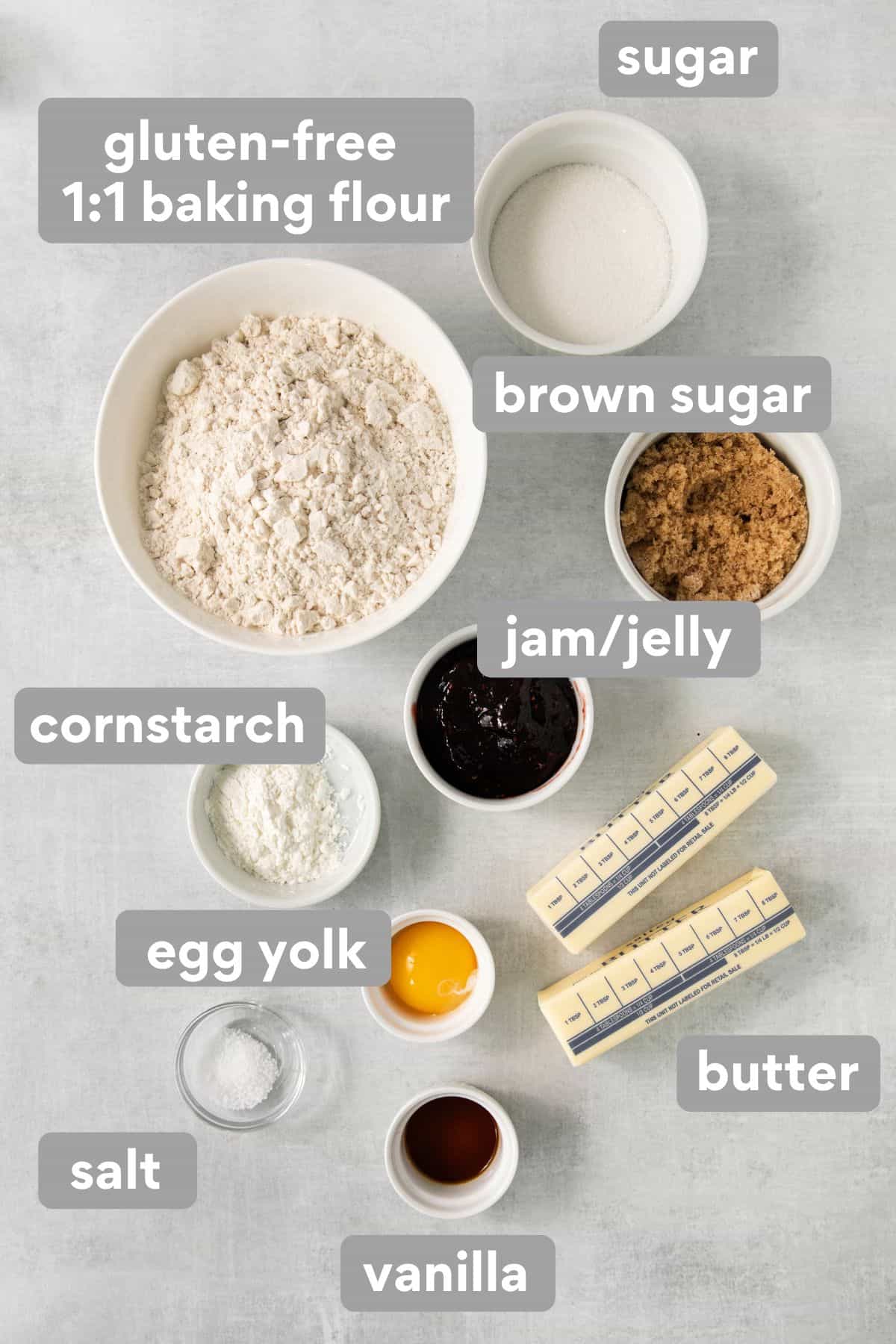
Here are a few notes on the key ingredients to make these cookies.
- Gluten-free 1:1 baking flour: I recommend using a high-quality gluten-free 1:1 baking flour. You want to look for an all-purpose flour that contains xanthan gum as a binder. This will prevent the cookies from being too crumbly. This is my favorite brand.
- Cornstarch: Cornstarch helps to lighten up the gluten-free flour blend for perfectly tender cookies.
- Egg yolk: I only use 1 egg yolk (not the whole egg!) for these cookies so they keep their shape. One large egg yolk adds richness and helps bind the dough together, without causing the cookies to puff up too much while they bake.
- Sugar: I like the fine even texture of the brand Domino sugar in gluten-free baking.
- Brown sugar: Be sure to use light brown sugar for this traditional cookie recipe. Dark brown sugar has more molasses and will slightly change the texture and flavor.
- Jam/jelly: You can use your favorite jam for this recipe: strawberry jam, blueberry jam, orange marmalade…any type of jam will do! Raspberry jam is my favorite.
How to Make Gluten-Free Thumbprint Cookies

- In the bowl of a stand mixer (or use a large bowl with an electric hand mixer), add the butter. Beat for 2 minutes until light and fluffy.
- Add the granulated sugar and light brown sugar. Mix on medium-high speed until light and fluffy, another 1-2 minutes.

- Add the egg yolk and vanilla and mix to combine.
- Add the gluten-free flour, cornstarch and salt to the wet ingredients. Mix on low speed, then after 30 seconds increase the speed to medium. Mix for 2-3 minutes until a thick dough forms.
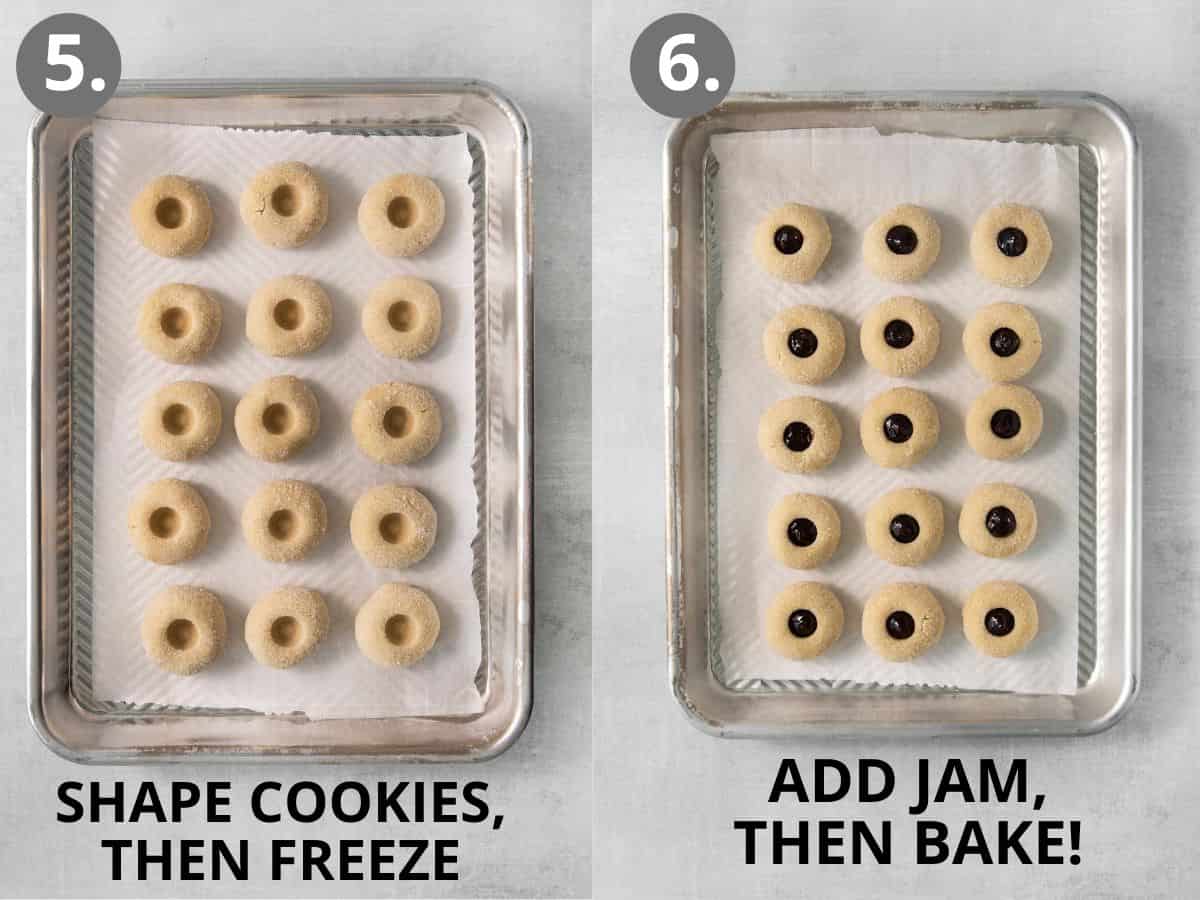
- Line a flat plate or small baking sheet with parchment paper. (One that will fit in your freezer!) Using a one-tablespoon cookie scoop or measuring tablespoon, measure out the cookie dough, roll into balls, roll each one in granulated sugar (optional), then place on the parchment-lined plate.
- Use your thumb (or the handle of a large wooden spoon) to press an indentation into each ball of cookie dough. Smooth any seams or cracks on the edges of the cookie.
- Freeze the cookie dough balls for 20 minutes.
- Spoon a scant 1/2 teaspoon of preserves/jam into the indentation in each one. (You can make this easier by scooping the preserves into a small ziplock bag and clipping the edge of the bag, then piping a little bit into each cookie. Do not overfill.)
- Freeze for another 15-20 minutes. Preheat the oven to 375F. Line a baking sheet with parchment paper or a silicone baking mat.
- Place each cookie dough ball at least 2″ apart on a parchment paper-lined cookie sheet and bake for 12 minutes, until starting to turn golden brown.
- Let the cookies cool on the baking sheet for 10 minutes. Then transfer to a wire rack. Repeat baking the remaining dough. Enjoy!
You also might like these gluten-free brownies!
Storage Instructions
- Store leftover thumbprint cookies in an airtight container at room temperature for up to five days. You can also place cookies in a single layer of a freezer bag and freeze for up to three months.
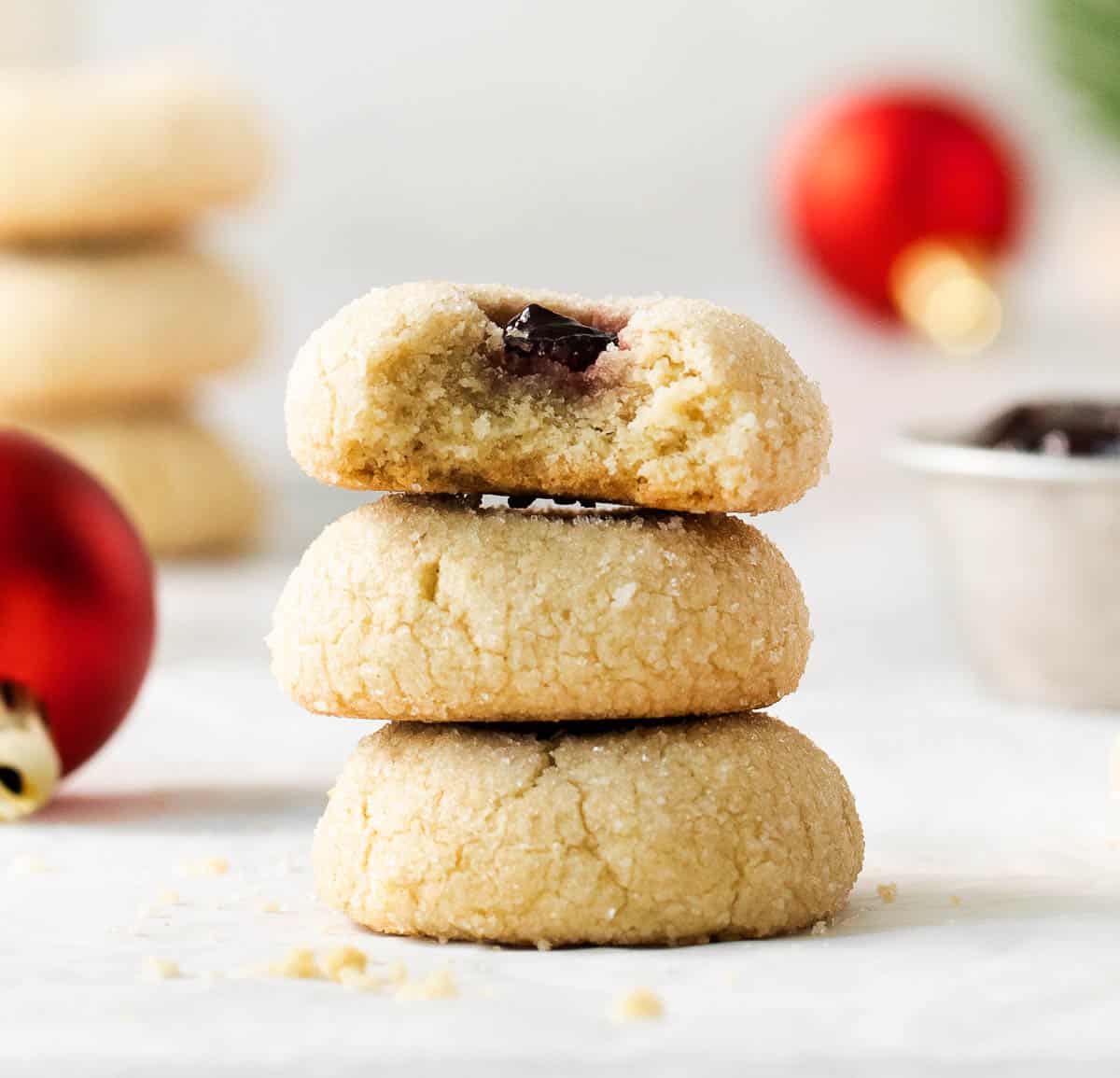
FAQ
Egg yolk is essential for making moist gluten-free cookies. Too much flour can also dry out the dough, so make sure you follow the recipe exactly and don’t put more flour than the recipe calls for.
Thumbprint cookies may go flat if the butter or dough is too warm. I like to chill my cookie dough balls before baking to ensure they are thick and chewy.
You can keep gluten-free cookies from spreading by refrigerating or freezing the dough before baking.
Expert Tips & Tricks
- Use any kind of jam or preserves you like. My favorite is raspberry preserves. You could even use lemon curd or chocolate ganache, if you prefer!
- Freezing the cookie dough helps the cookies keep their shape.
- Adding the raspberry preserves halfway through freezing ensures the jam stays in the center of the cookie and doesn’t absorb into the dough as they bake.

More Gluten-Free Christmas Cookies
I hope you love this gluten-free thumbprint cookie recipe as much as we do! If you try these gluten-free thumbprint cookies, be sure to leave me a comment/rating below. I’d love to hear from you!

Gluten-Free Thumbprint Cookies
Ingredients
- 1 cup butter (2 sticks) softened to room temperature, 226 grams
- ⅓ cup granulated sugar 70 grams (plus more for rolling)
- ⅓ cup light brown sugar packed, 70 grams
- 1 large egg yolk
- 1 teaspoon vanilla extract
- 2 cups gluten-free 1:1 baking flour 300 grams
- 2 tablespoons cornstarch
- ½ teaspoon salt
- ½ cup jam or preserves flavor of your choice I prefer raspberry preserves
Instructions
- In the bowl of a stand mixer (or use a large bowl with an electric hand mixer), add the butter. Beat for 2 minutes until light and fluffy.
- Add the granulated sugar and light brown sugar. Mix on medium-high speed until light and fluffy, another 1-2 minutes.
- Add the egg yolk and vanilla and mix to combine.
- Add the gluten-free flour, cornstarch and salt. Mix on low speed, then after 30 seconds increase the speed to medium. Mix for 2-3 minutes until a thick dough forms.
- Line a flat plate or small baking sheet with parchment paper. (One that will fit in your freezer!) Using a one-tablespoon cookie scoop or measuring tablespoon, measure out the cookie dough, roll into balls, roll each one in granulated sugar (optional), then place on the parchment-lined plate.
- Use your thumb (or the handle of a large wooden spoon) to press an indentation into each ball of cookie dough. Smooth any seams or cracks on the edges of the cookie.
- Freeze the cookie dough balls for 20 minutes.
- Spoon a scant 1/2 teaspoon of preserves/jam into the indentation in each one. (You can make this easier by scooping the preserves into a small ziplock bag and clipping the edge of the bag, then piping a little bit into each cookie. Do not overfill.)
- Freeze for another 15-20 minutes. Preheat the oven to 375F. Line a baking sheet with parchment paper or a silicone baking mat.
- Place the cookies at least 2" apart on a parchment paper-lined cookie sheet and bake for 12 minutes, until starting to turn golden brown.
- Let the cookies cool on the baking sheet for 10 minutes. Then transfer to a wire cooling rack. Repeat baking the remaining dough. Enjoy!
Notes
- Gluten-free 1:1 baking flour: I recommend using a high-quality gluten-free 1:1 baking flour. You want to look for an all-purpose flour that contains xanthan gum as a binder. This will prevent the cookies from being too crumbly. This is my favorite brand.
- Cornstarch: Cornstarch helps to lighten up the gluten-free flour blend for perfectly tender cookies.
- Egg yolk: I only use 1 egg yolk (not the whole egg!) for these cookies so they keep their shape. One large egg yolk adds richness and helps bind the dough together, without causing the cookies to puff up too much while they bake.
- Use any kind of jam or preserves you like. My favorite is raspberry preserves. You could even use lemon curd or chocolate ganache, if you prefer!
- Freezing the cookie dough helps the cookies keep their shape.
- Adding the raspberry preserves halfway through freezing ensures the jam stays in the center of the cookie and doesn’t absorb into the dough as they bake.
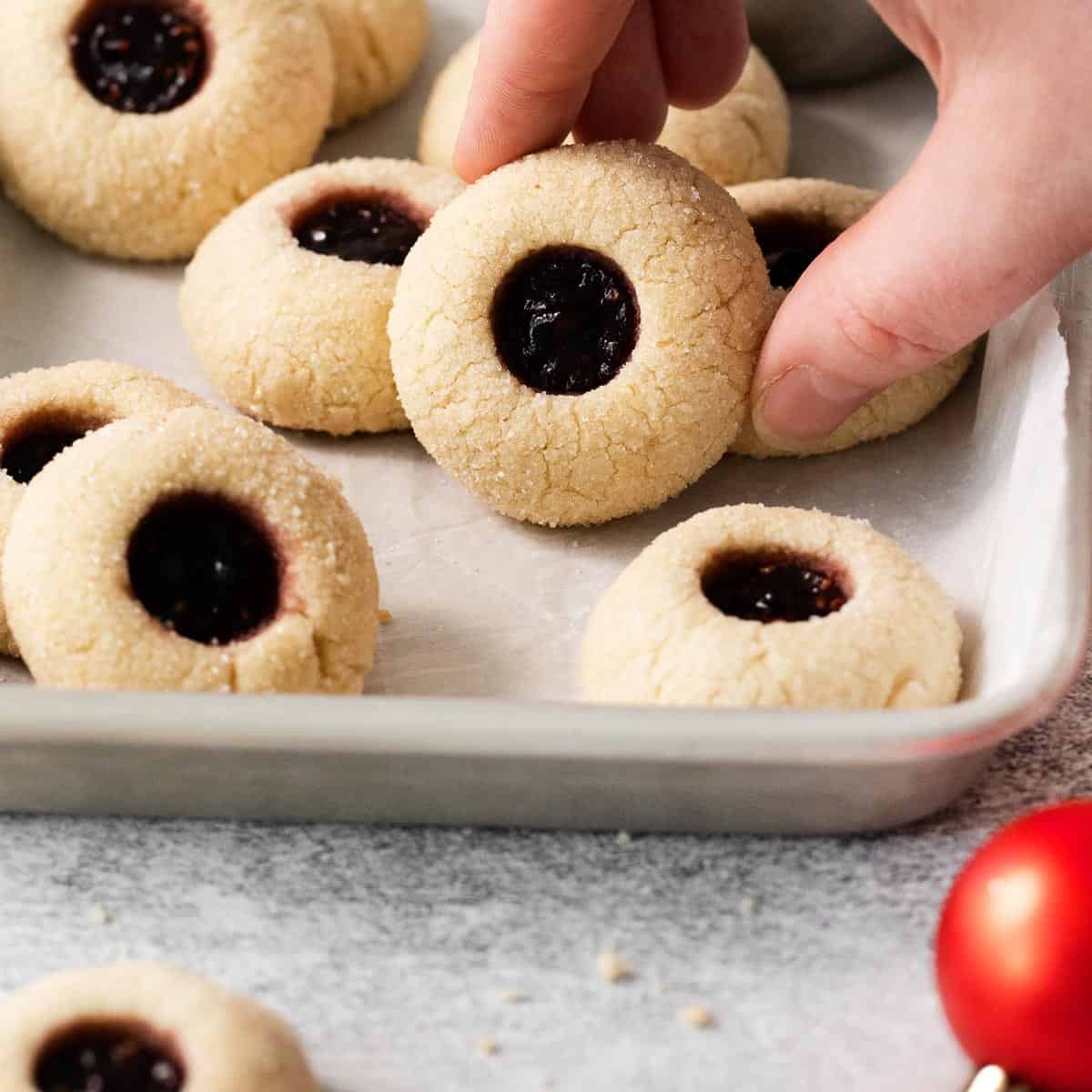
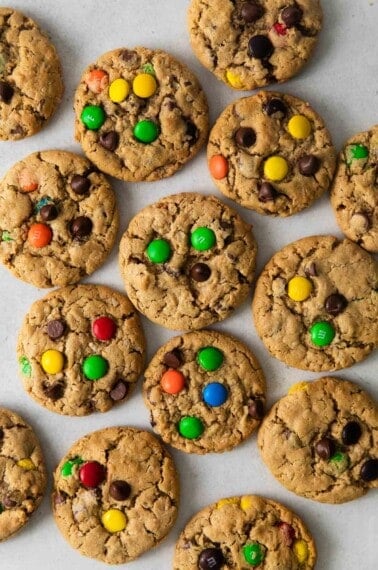
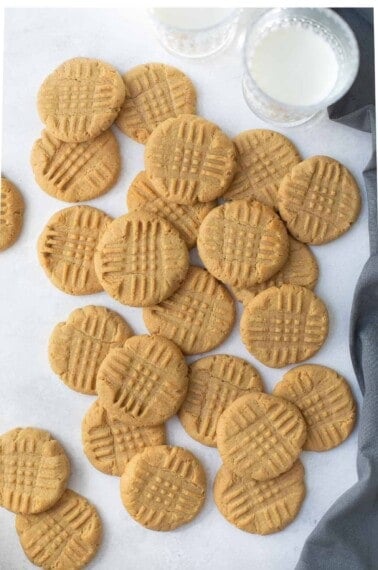
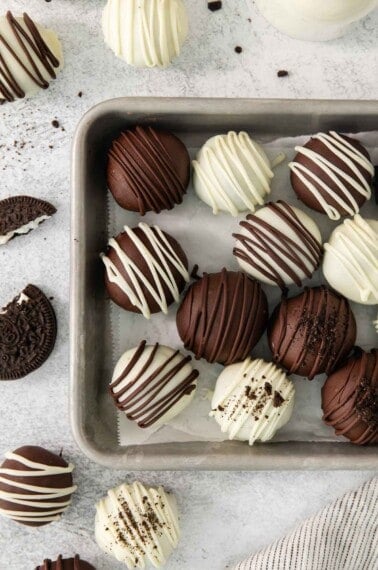
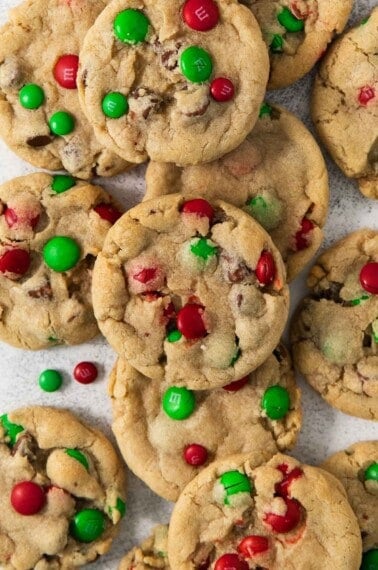
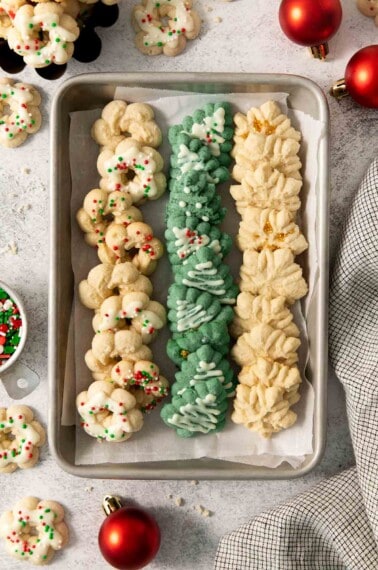



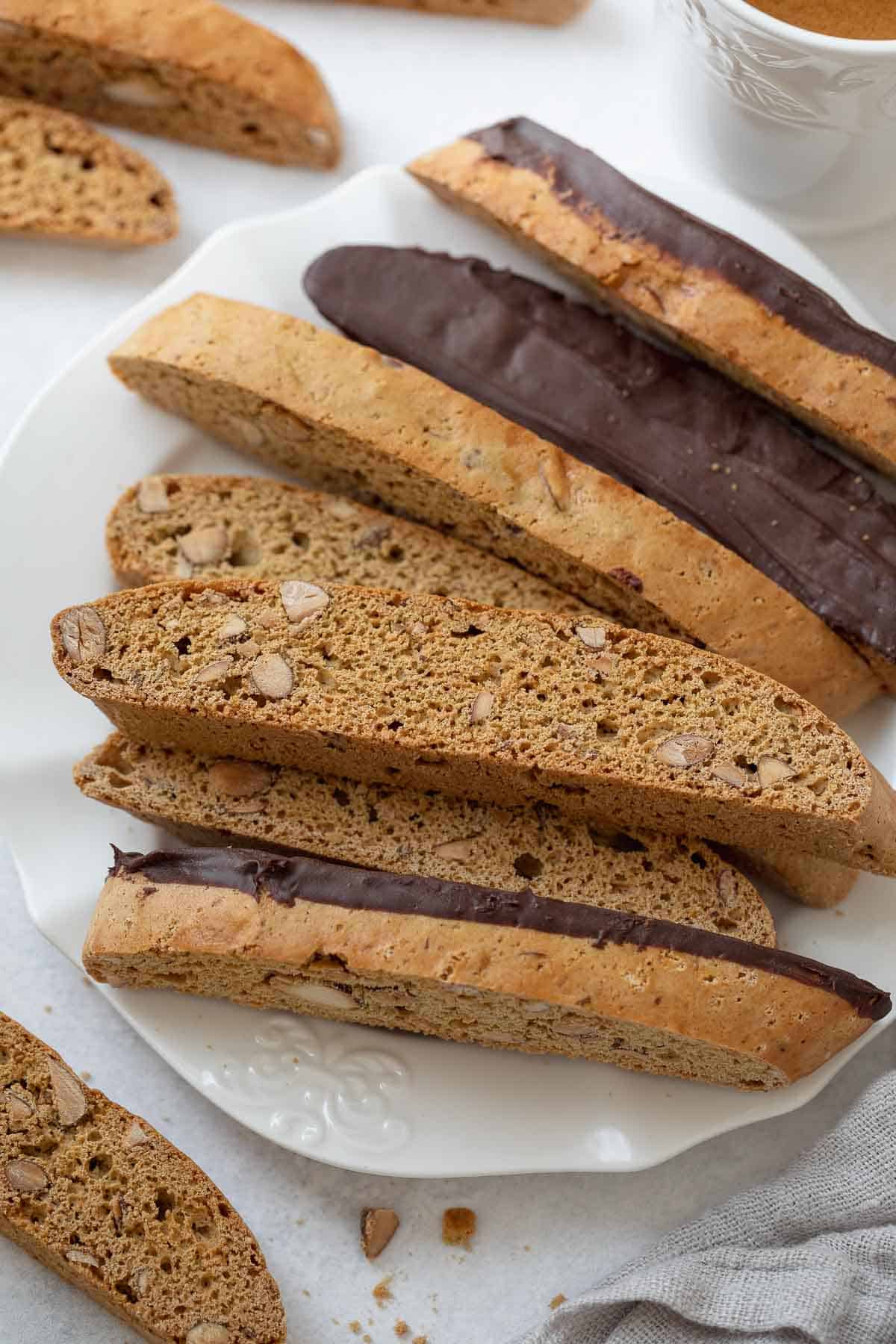
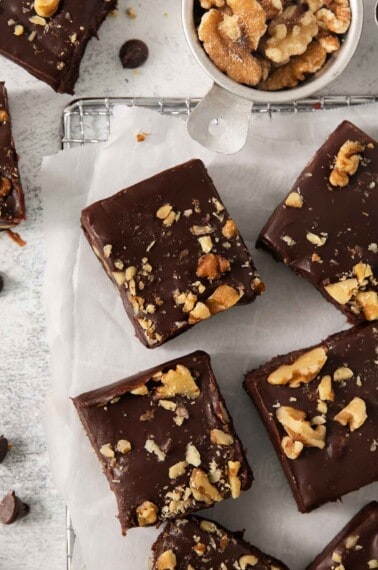
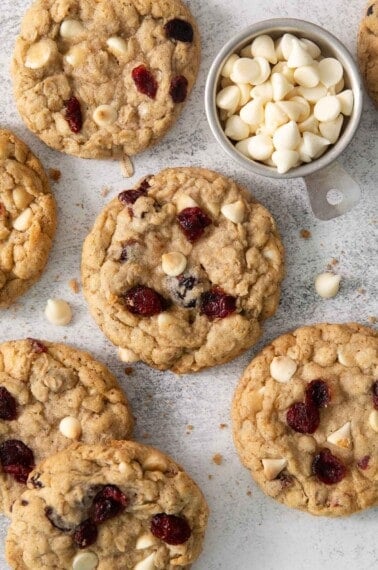










I actually didn’t freeze these because I’m terrible at following directions but they came out great and taste amazing. Thank you for this recipe. Been craving thumbprint cookies and was recently diagnosed as celiac – these were a treat
Check out Solo Pastry filling instead of using jam. I use their raspberry flavor to make my non-gluten free thumbprints. No need to freeze the dough before baking. The pastry filling stay in the center without soaking into cookie. Company is located in Chicago. Enjoy!
This is so great to know! Thanks for the sharing. I’ll have to check that out!
Pre gluten free I made Cranberry Lime Thumbprint cookies that were . They had lime zest in the dough and canned whole berry cranberry sauce for the filling. I haven’t been able to replicate them gluten free yet, but maybe this recipe will work! I think the other two I tried had some or all almond flour, and it didn’t taste close.
Cranberry lime sounds like a delicious combination! Yes I think this recipe would be a good base for that. I love almond flour cookies but not for thumbprints. The gluten-free 1:1 baking flour will help the thumbprint hold it’s shape! Let me know how they turn out if you try it 🙂
When we used to make these pre gluten-free days before baking we rolled the cookie balls in egg white then in finely chopped walnut then made the thimble hole for the jam.
Do you think that might work with this recipe?
Can I use margarine or earth balance instead of butter?